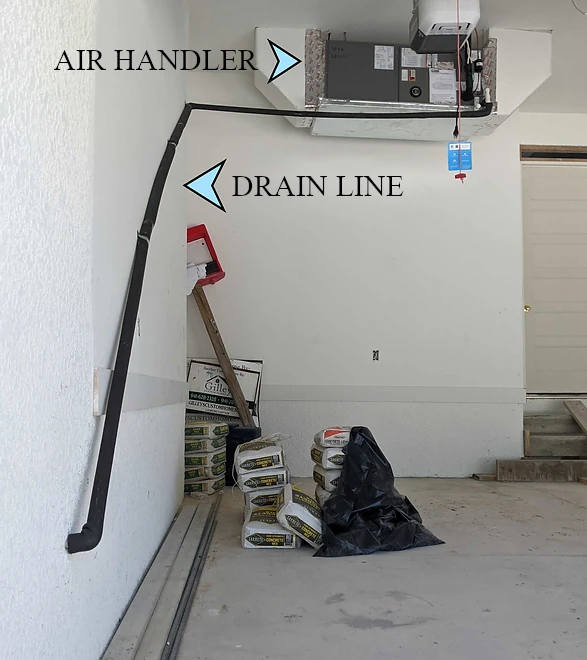What are Condensate Drain Lines?
As your AC system runs, it pulls moisture from the air, functioning as a dehumidifier. But where does all this water go? Enter the condensate drain line. These carry the water generated from the evaporator coil in your air handler to the outside. PVC is commonly used for this purpose for its rust resistance and ability to form watertight seals with proper installation.

Common Issues with Condensate Drain Lines
Most commonly drain lines tend to get clogged with dirt, dust, mold, and or algae. As air cycles through your system, airborne particles pass through your air handler, build up on your evaporator coil, and can settle in the drain pan. Over time this build up can lead to drain line clogs if your system is not regularly maintained. We offer preventive maintenance agreements to prevent issues such as drain line clogs.
Often these clogs can cause the AC to shut off to prevent the drain pan from overflowing and causing water damage to the surrounding ductwork, insulation, drywall, and AC unit. Some units do not have sensors to detect an overflowing drain pan; we recommend a float switch in those cases.
It also may be possible that the PVC is damaged by an external force. Our technicians will find the break and replace the damaged section of PVC.
Symptoms of a Clogged Condensate Drain Line
- Drain line clogs have some indicators when they occur, if you notice any of the following symptoms give us a call.
- -You may notice water around your air handler.
- -You may notice musty or moldy smells around your air handler or coming from your vents. (This may also be an indication you need a duct cleaning.)
- -Your AC unit will not turn on, this is usually because of the float switch(es) in your AC unit preventing your drain pan overflowing.
- -Your AC unit is unable to keep up with cooling your house.




